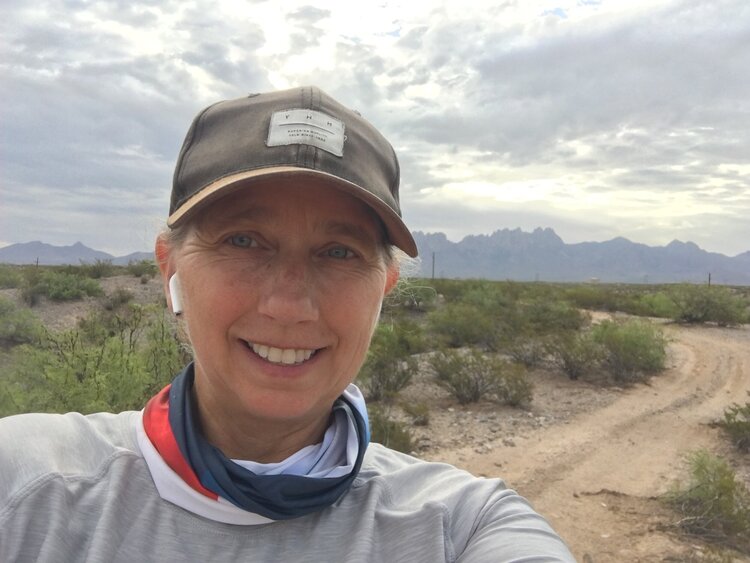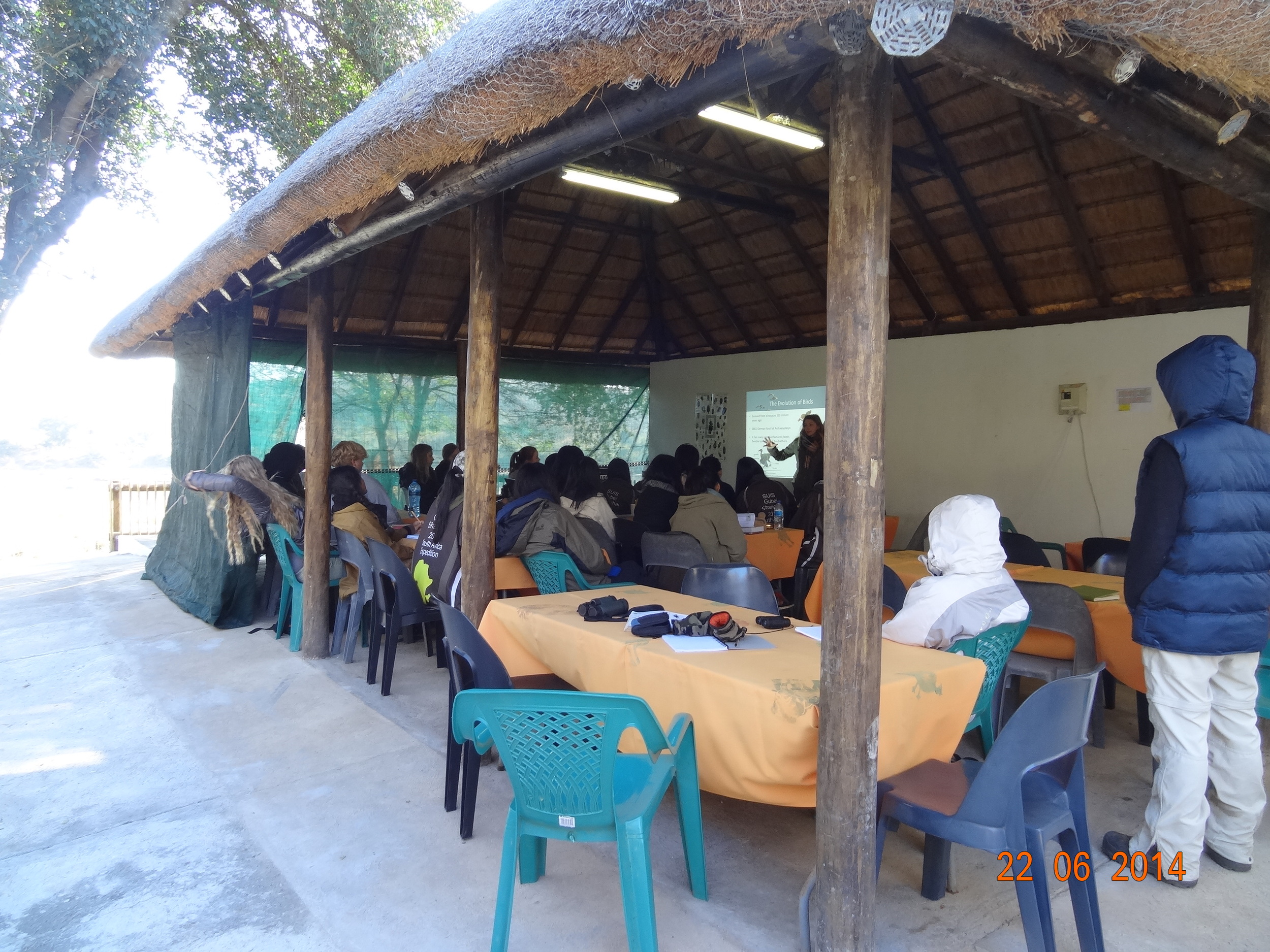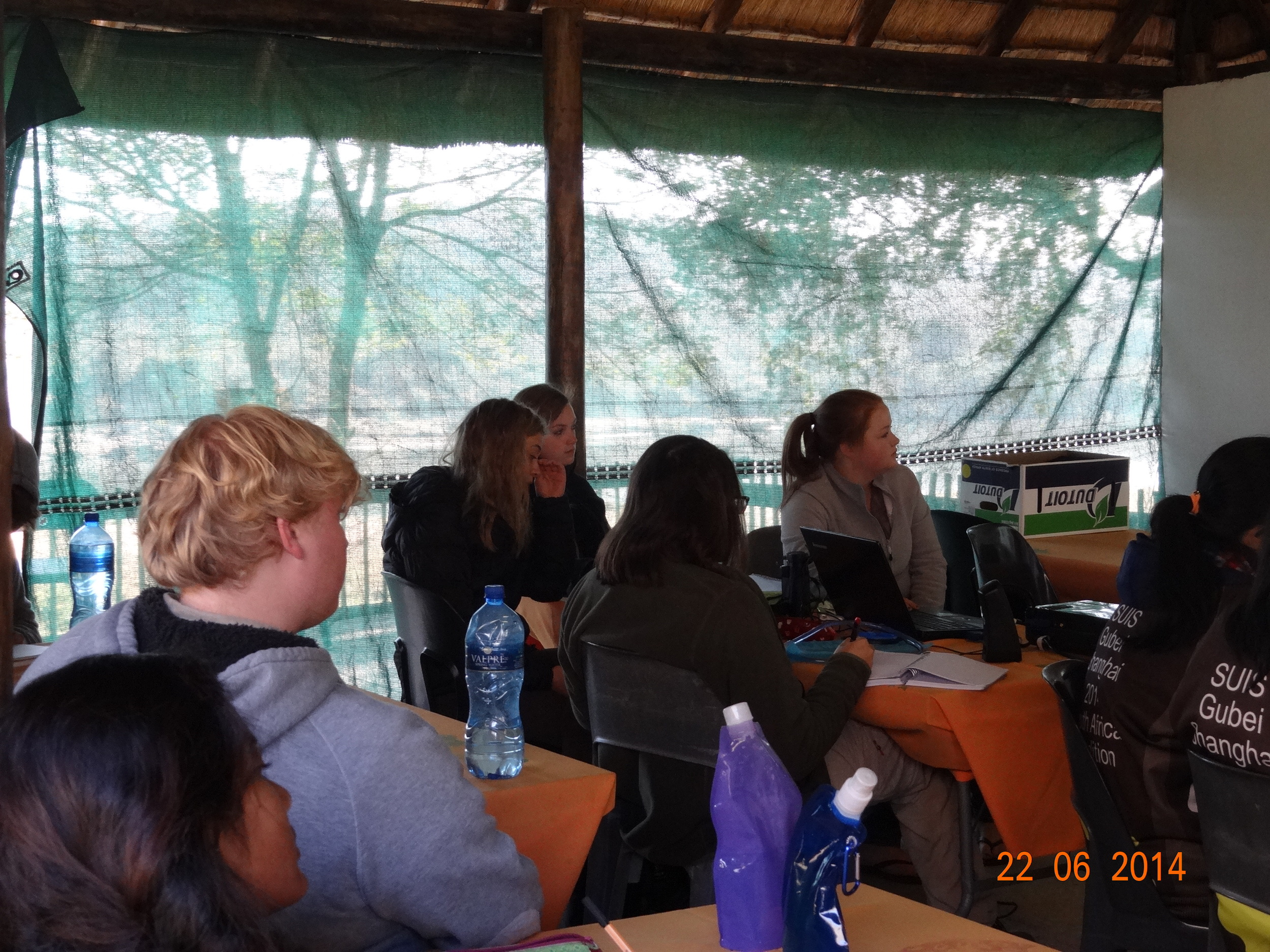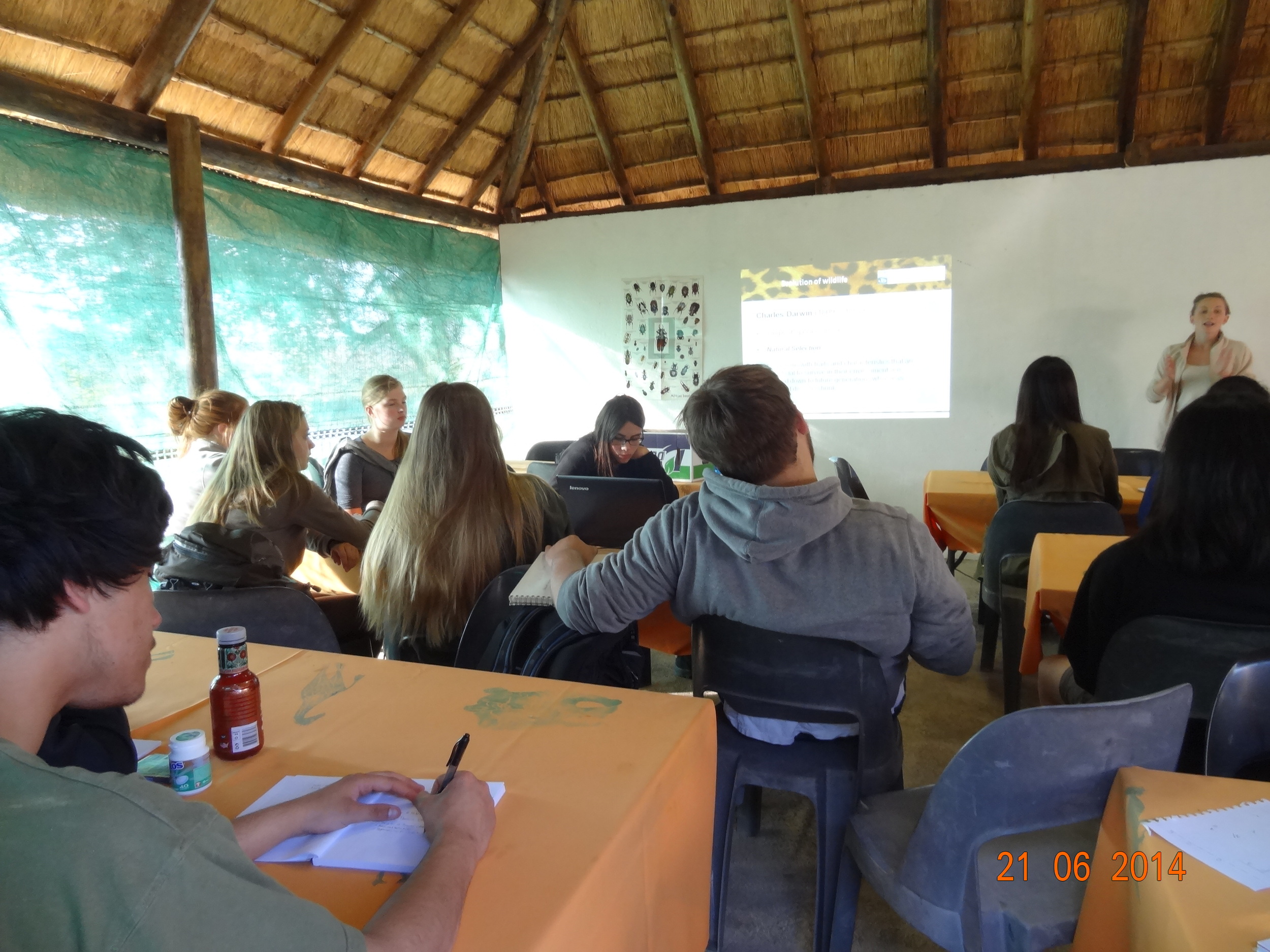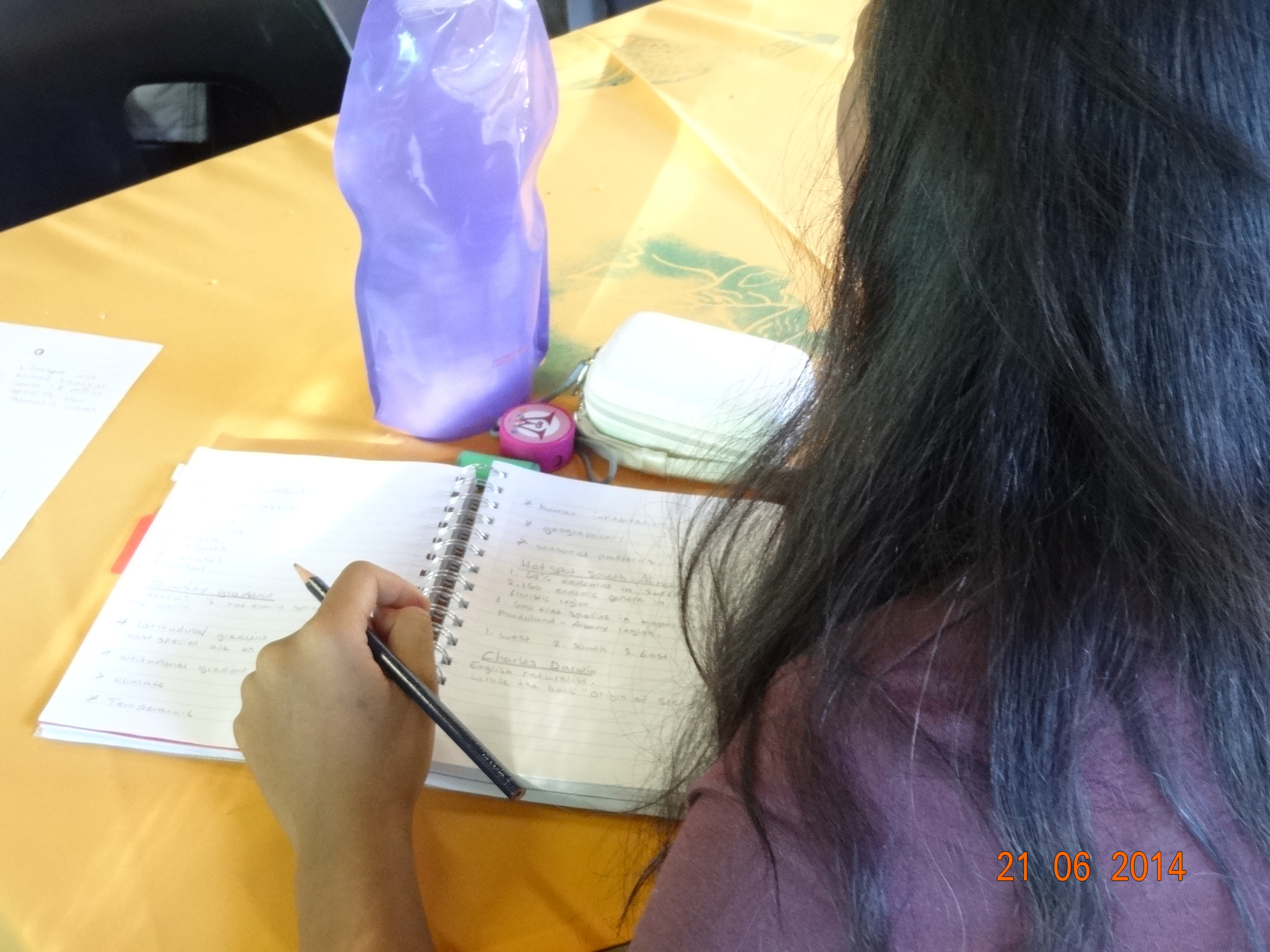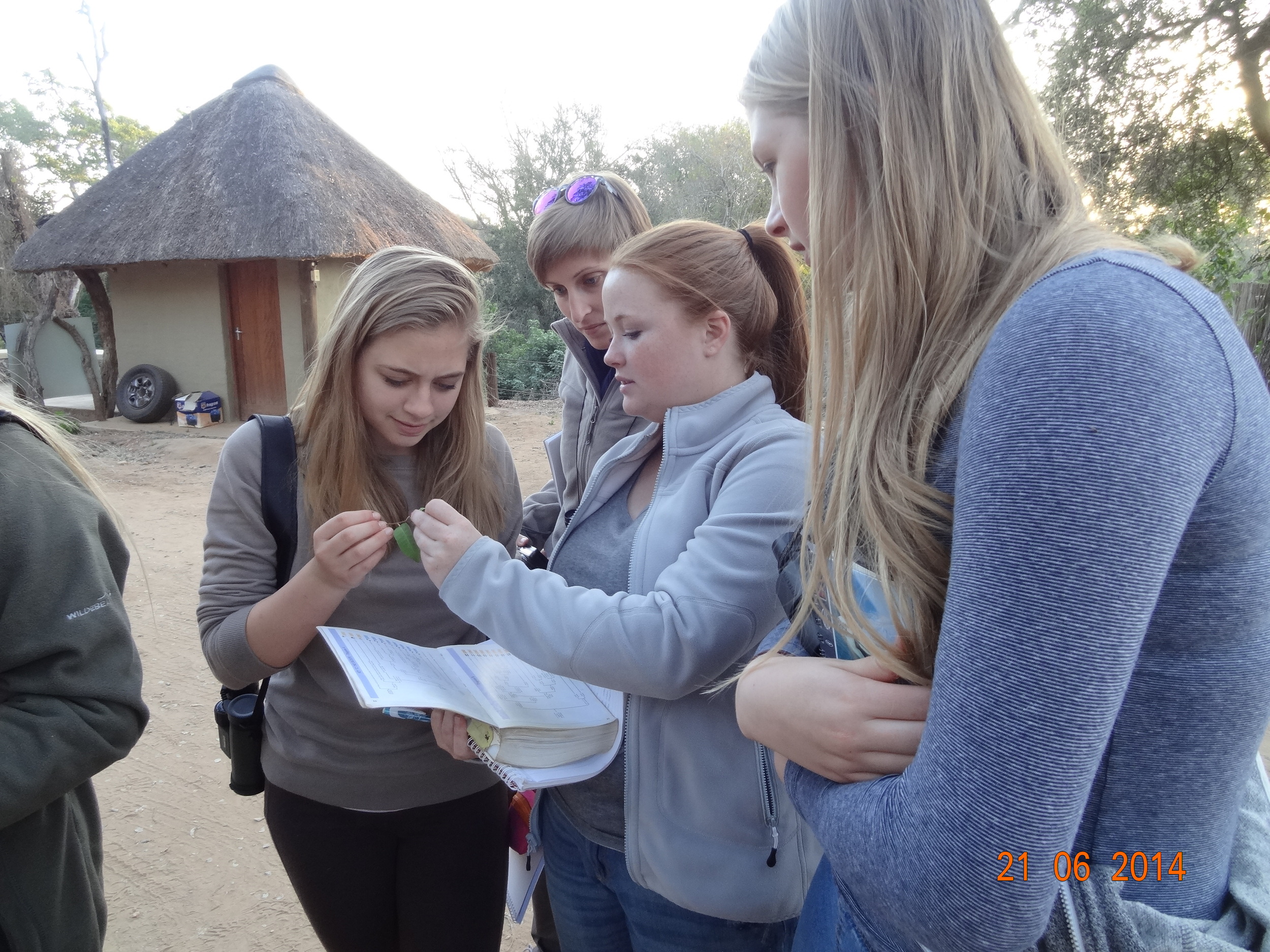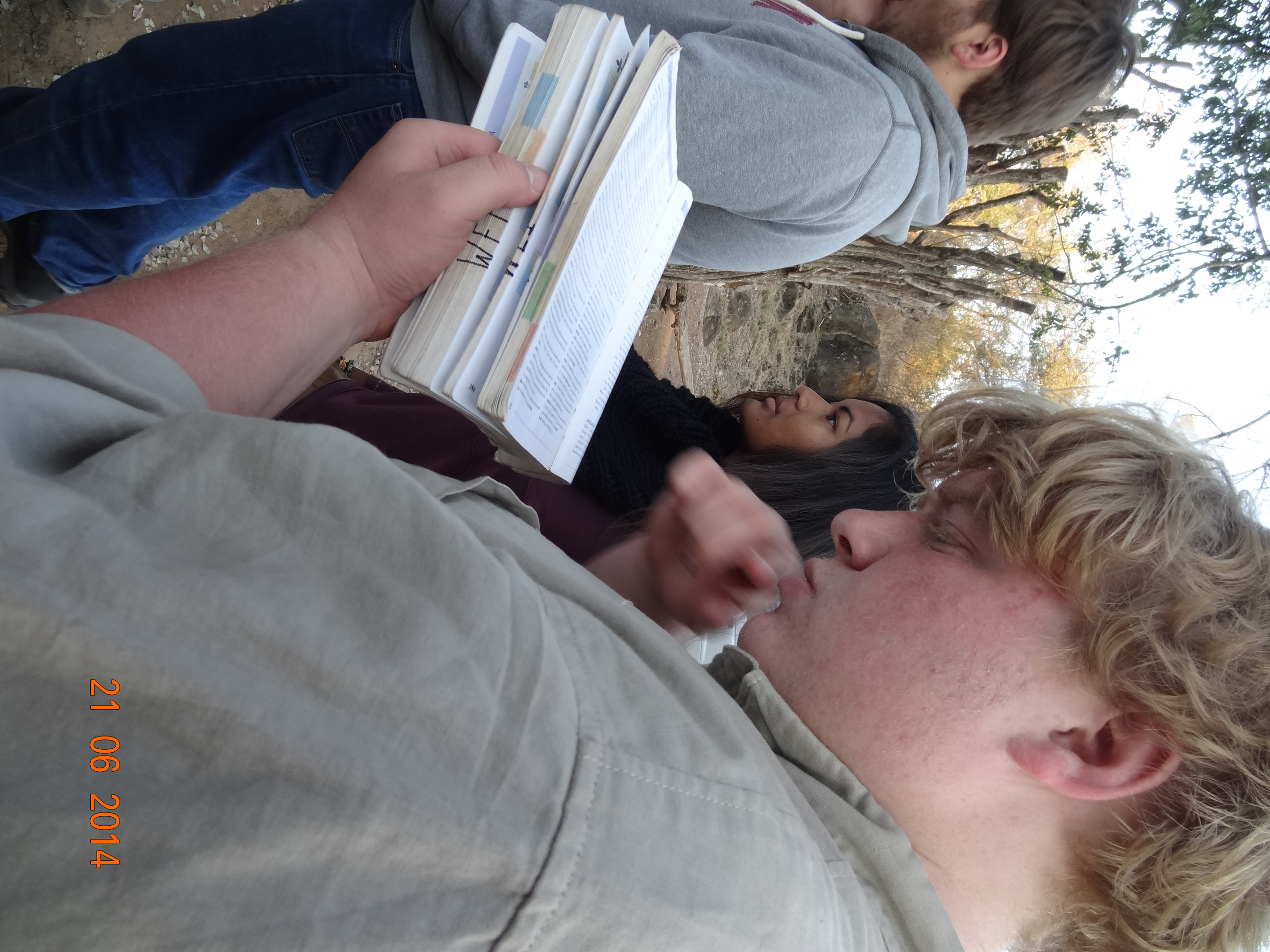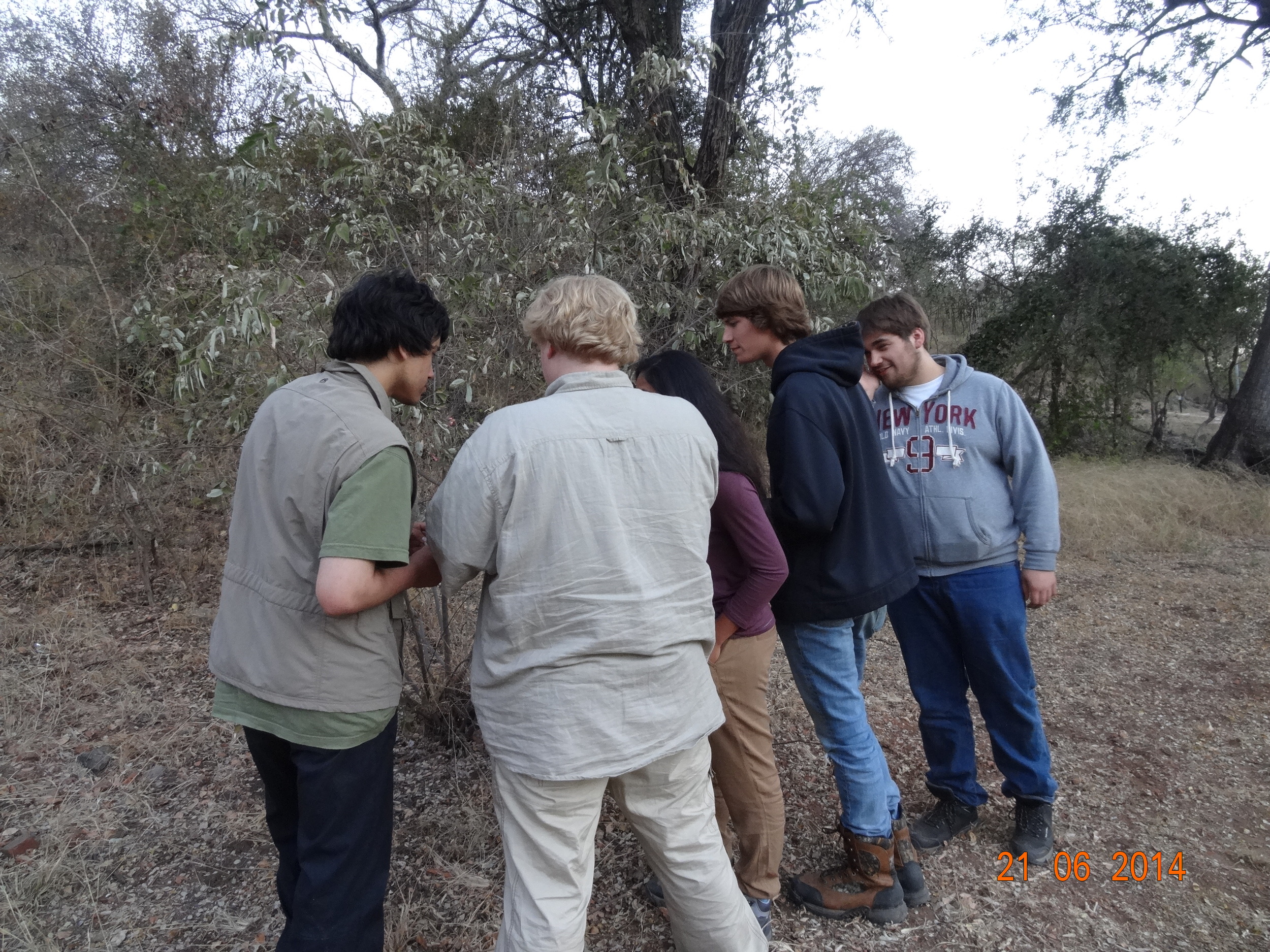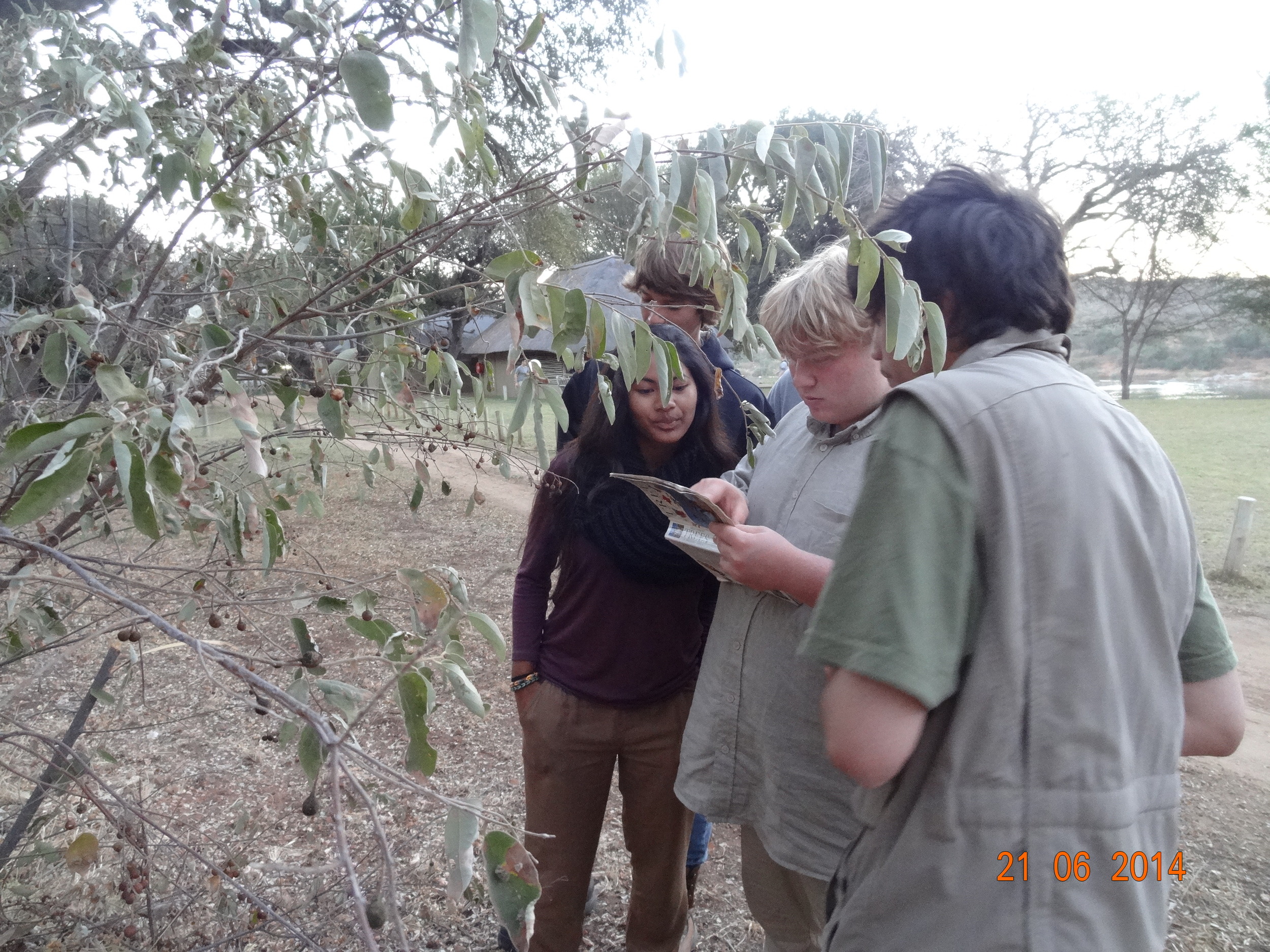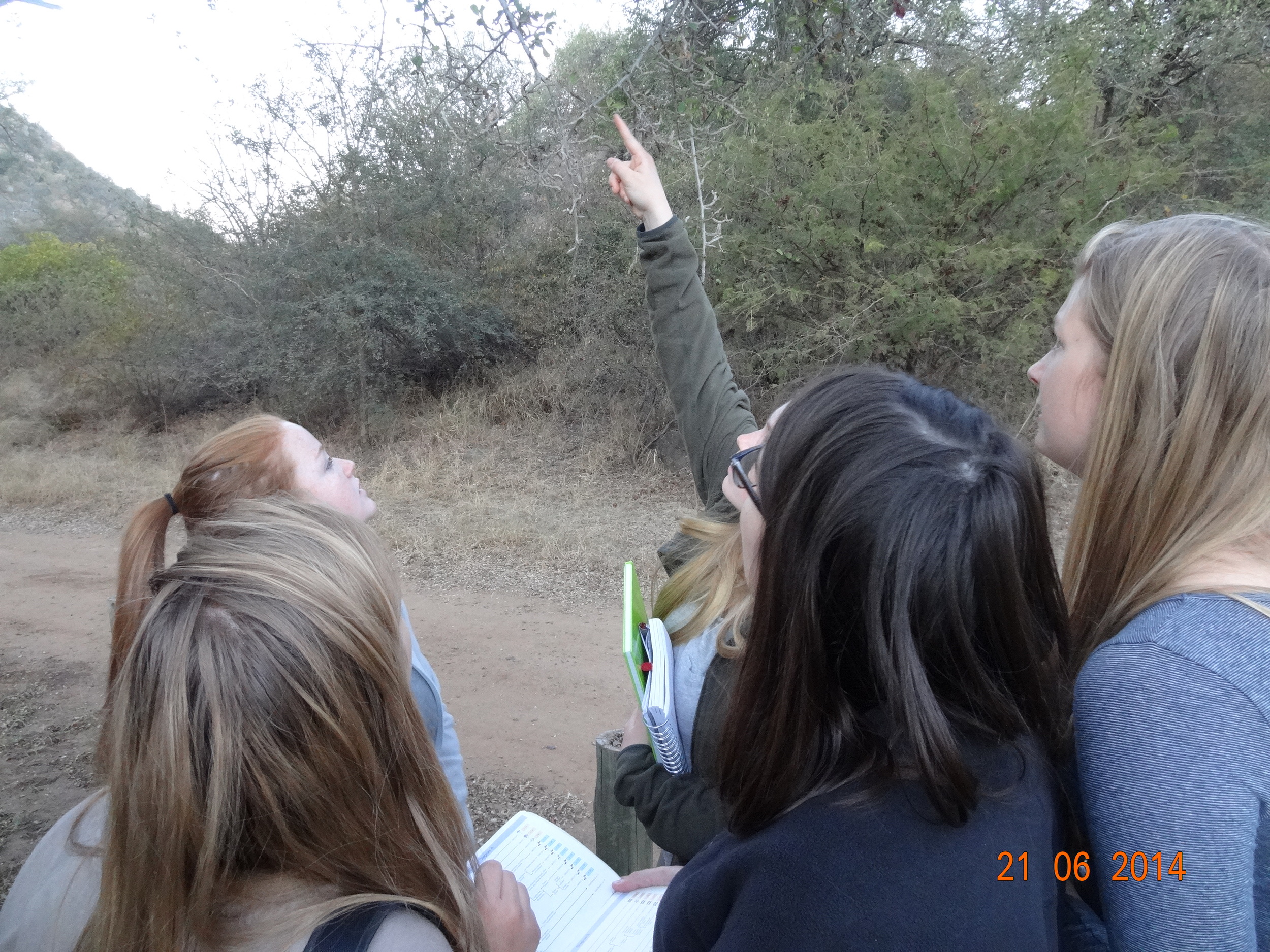The location of this place is amazing. All along the camp there are look out points facing over the Olifants river. In the morning we easily spot the hippos that had been “laughing” at us the previous night and the crocodiles that have settled onto the sandy riverside to sun them selves. Additionally, we see spur foul families running around just outside the fence line.
The students stagger out of their cabins at 6:25 a.m., it's clearly too early for them. They manage to grab the simple breakfast before climbing into the jeeps. They munch on their fruit and toast in the 1 degree Celsius air as we head off into the early morning sun of the Woodland Savanna with hopes of spotting game. Within 100 m of the electric fence our guide already spots evidence: tracks of elephant, giraffe, and baboon. We learn that elephants eat over 200 kg of food per day and that their huge feet have cartilage in between the toes that helps the feet spread apart to better support the weight of their gigantic heads. Due to their poor digestive systems, they poop every 1/2 hour to keep things moving. They travel 5-6 km/hr yet they can stop in a location and graze for hours at a time.
guinea fowl
Additionally, we hear all kinds of bird calls, this morning particularly, the scrub robin. We patiently look through our binoculars hoping to spot interesting fowl. One student can't be bothered by the birds and sleeps heavily through a lot of the ride, leaning over on his flanking classmate and teacher (haha--that's me). We sight the following fowl: Red and Yellow Hornbull, Glossy Starling, Doktail drongo, Gray Go Away Bird (lots and lots), and Guinea Fowl.
Kudo hiding inthe bush. Photo by Chanthea de Jonge
Furthermore, 2 water buck, Impala, a HUGE male Kudo (horns 1.5 m long) and later a smaller male Kudo with a female (probably his mother) are to be seen.
A female Koki Franklin on the road is unusually uninhibited by our jeep. And then we spot her 1-day old chick that she is trying to protect.
GIRAFFE! A big beautiful old male crosses our path twice on different occasions, the second time he walks right in front of us on the trail. Towards the end of our ride we spot an additional lone giraffe.
Three electrical towers house some baboons. This is an example wherein animals have utilized the structures of humans to seek higher “ground” for watching out for danger.
A bachelorhood of Impala, Bushbuck, and Steenbok are also part of our morning.
It's an amazing ride and everyone is elated by the end of our journey. The temperatures are rising and we have some free time before lunch. We take a hike to the lookout tower where we enjoy a warm and relaxing time with our binoculars studying all that passes by.
During lunch we spot AT OUR CAMP SITE, a huge impala herd by the water, a giraffe coming down to drink, warthogs, and the usual hippos and crocodile. It is amazing to me that already within one day hippos and crocodile can feel commonplace! THERE ARE HIPPOS IN OUR BACKYARD!
student evaluation response
Orla delivers a very good lecture on biodiversity following lunch. I watch these young enthusiasts and think how fun their jobs are! I could teach under these circumstances!!! During the break we spot more bushbuck and waterbuck by the water --- and, of course, the hippos and crocodile and the warthogs!
Enjoying some sun and the view from our campsite, just outside the lecture and dining area
I find I’d rather grab my binoculars than a camera and so, I'm afraid I'm not collecting any amazing pictures but I’m storing so much to my memory of these amazing sites that appear before me in my binoculars.
Then, a lecture on tree anatomy and a little practical on tree identification. The students eagerly study the trees assigned to them and pour over the field manuals to properly identify their species. They do quite well and we get compliments on how amazing this group is :) I love these students.
Student evaluation response
The night lecture on snakes, scorpions, and spiders is captivating, given by Caz, a a tough and interesting superwoman. Her lecture is accompanied by hyena calls and hippo calls from outside the fence of our camp She herself has been bitten numerous times by ticks and sac spiders and been spit at by a spitting cobra-----and had so many experiences with friends and acquaintances with all kinds of other bites. We are captivated by neurotoxic, cytotoxic, and haemotoxic spiders, scorpions, and snakes. A deep respect for the Bush and its hazards settles over us as this evening draws to a close. Before slipping into bed, I’m tempted to check for spiders, scorpions, and snakes. My colleague and I laugh at our fears and easily fall asleep, eager for the next day.
